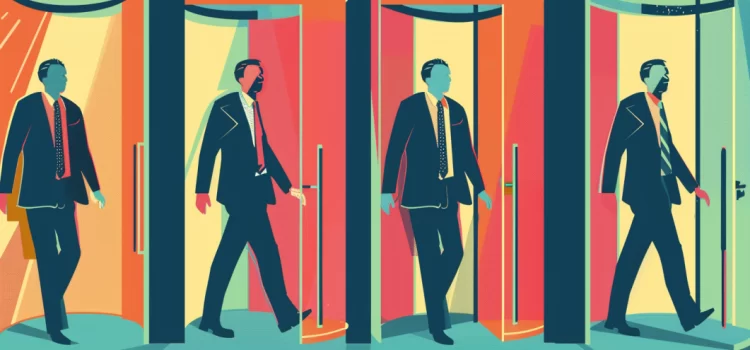
Why were there so many leadership changes at Twitter? What created the tension among the founders?
Since its creation, Twitter has had a revolving door of CEOs. From Evan Williams to Jack Dorsey to Dick Costolo, leadership at the company has always been tenuous.
Here’s a brief history of the CEOs of Twitter, as described in the book Hatching Twitter.
Twitter’s Revolving Leadership
Twitter has gone through significant changes in its leadership over the years, which have had a big impact on the company’s direction and culture. Let’s take a look at some of the key changes at Twitter.
Conflicting Visions
Jack Dorsey and Evan Williams found themselves at odds over the strategic direction and fundamental objectives that Twitter should pursue. Jack viewed Twitter as a platform for sharing personal narratives, while Ev saw it primarily as a tool for disseminating real-time news updates. Ev emphasized the importance of prompt news over personal social posts.
Founder’s Dilemma
After leaving the company, Jack Dorsey was eager to be acknowledged as the initial visionary behind Twitter. He took steps to emphasize his significant role in the creation of the platform, often minimizing the contributions of his peers. The story that emerged, positioning Jack as the sole creator, started to gain traction and was deliberately disseminated via public platforms. Jack’s growing visibility bolstered the credibility of this narrative. However, this portrayal led to unrest and unease among investors and stakeholders, as it was at odds with the commonly accepted story of how Twitter was created. Questions began to arise regarding the actual founder of the platform, and Jack’s self-promotion caused friction within the company.
Evan Williams Steps Down as CEO
There was growing dissatisfaction among Twitter’s board members with how Evan Williams was running the company. They felt he was too slow in making decisions and growing Twitter. There were also concerns that his focus on personal relationships could create an unprofessional work environment.
(Shortform note: Criticisms of Evan Williams’ leadership style may not take into account the full context of his decisions and the challenges inherent in leading a rapidly growing company.)
Dick Costolo Takes the Reins
As the search for a new CEO began, Dick Costolo emerged as a top candidate. He had a strong track record in business and was well-liked by Williams. However, the transition was not smooth. Williams suddenly found himself out at Twitter, and Costolo faced a difficult situation where the board had essentially decided Williams’ fate against Costolo’s wishes. As the new CEO, Costolo had to assert his authority during a tumultuous time and shift the company’s focus to financial performance as it prepared to go public.
(Shortform note: Dick Costolo’s challenges in establishing authority at Twitter could be indicative of the broader difficulties faced by any new leader in a dynamic and previously established corporate culture.)
Jack Dorsey’s Comeback
Meanwhile, Twitter co-founder Jack Dorsey was working behind the scenes to regain influence at the company after being pushed out earlier. Through strategic moves and conversations with key people, he managed to orchestrate Williams’ exit and become Executive Chairman himself. But Dorsey’s return was not without challenges.
(Shortform note: Jack Dorsey’s maneuvering to regain influence at Twitter could be interpreted as a natural part of the ebb and flow of leadership within a company, rather than an exceptional power struggle.)
Tensions Arise
In his new role, Dorsey often felt sidelined and not included in major decisions. While it seemed from the outside that he was back in charge, internally it was clear that Costolo was still running the show. This led to a tense dynamic between the two leaders.
The power struggles within Twitter’s leadership are a prime example of the cutthroat nature of Silicon Valley, where the fates of major tech companies often hinge on internal battles between executives. As these conflicts unfolded, employees and industry observers alike wondered what it would mean for the core identity and future direction of Twitter.






